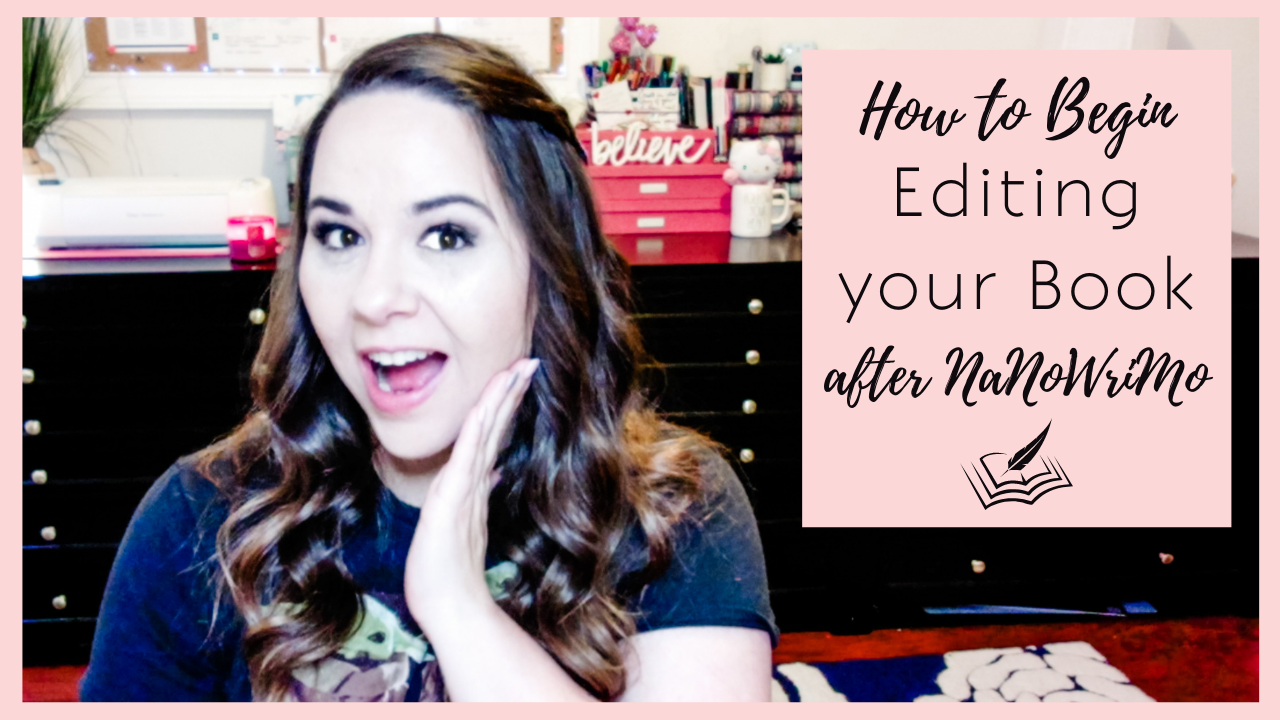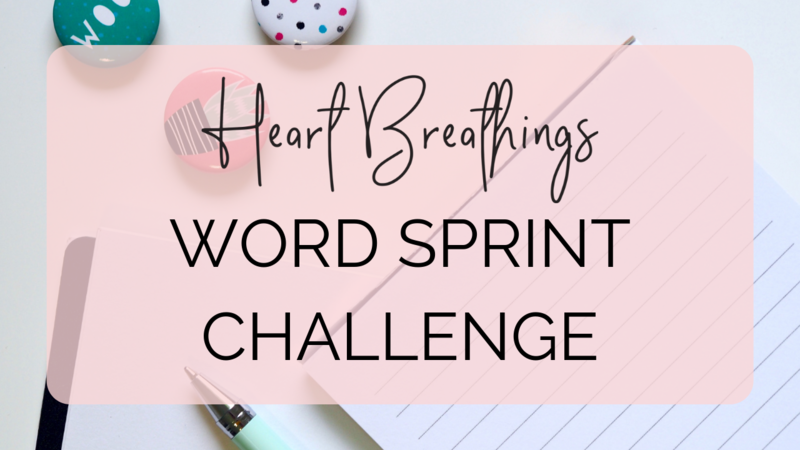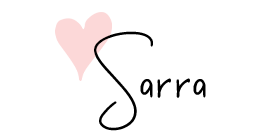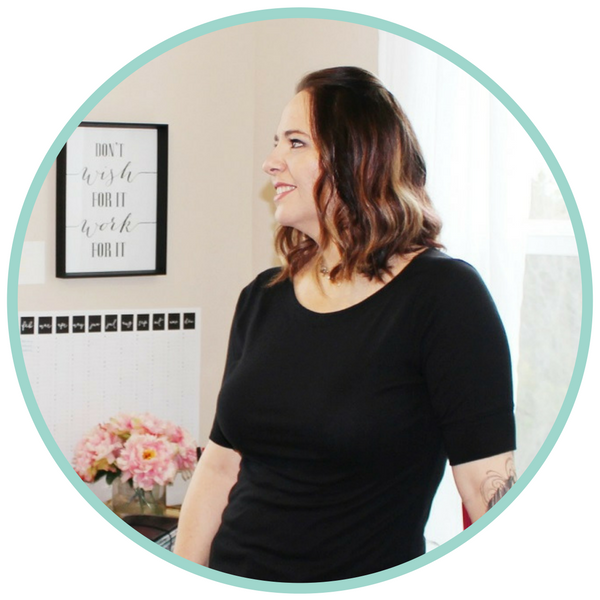

January 28, 2021 by Sarra Cannon
Self-Publishing Tips | Writing Tips
Writing a rough draft of your novel during NaNoWriMo is an absolute whirlwind, but what the heck do you do with your book after NaNo is over?
Today, we’re going to talk about how to get started with your self-edits. This, of course, applies to all novels and rough drafts, not just NaNoWriMo. However, since there’s always so much focus on prepping for NaNo (and never as much on what to do afterward), I thought January would be the perfect time to dive in.
Watch the video the video on editing your Nano novel here:
First things first. Ask yourself whether you actually finished your novel.
Writing 50,000 words in 30 days is not easy (for most of us), and chances are, we all needed a long break after the marathon of writing late into the night and eating nothing but junk food for a month. (Just me? Didn’t think so…)
What happens to a lot of writers is that even though you won NaNoWriMo, 50,000 words was not quite enough to actually finish the entire book. Many novels these days are more like 70,000-100,000 words, so NaNo might have gotten you a good way through, but you might not be finished with the actual drafting process just yet.
If you didn’t finish your novel, this might be your first step.
Notice I said “might” here.
There are a few post-NaNo scenarios that will affect your decision of whether to keep going or to go back to the beginning and start a second draft right away. I’ll cover the two most common.
Scenario 1: Your novel went completely off the rails and you have no idea what’s happening.
This was me during my first Nano way back in the old days of 2007. The whole thing took on a life of its own, and by the time I finished my 50k words, I honestly had no idea what was happening.
If this is you, you probably need to take a step back and rethink the whole thing from the beginning. Consider going through my “How to plot a novel” series of videos and creating an outline. This might be painful, because you may find that you need to throw out or rewrite large chunks of your novel, but don’t be discouraged.
In my experience, trying to keep going from where you are when your whole book feels like a misguided mess is just going to result in even more frustration. Just go back to square one and take the time to figure out what’s actually happening in this book. Deep breaths.
Scenario 2: Your novel was going well and you know where it’s headed from here. You just didn’t finish it completely.
In this scenario, your outline or general idea of what’s happening in the book is clear. You know what still needs to happen, more or less, to finish the book, but you just need to write it.
If this is you, I recommend reading back through the last couple of chapters you wrote during November and jumping right back in to finish the book. Even if you know there are parts of the draft that will need major rewrites, you will probably benefit from finishing the book before you go back to edit the beginning.
Okay, so once you have a completed draft of your novel with a clear beginning, middle, and climax/resolution, it’s time to start your edits.
How, exactly, do you go about that?
I know it might feel like a huge, daunting mess, but think of it like a puzzle. Before you started NaNo, you just had a giant pile of disconnected ideas. Now, you’ve got some connected pieces and a much better idea of what the big picture is.
You just need to fill in the blanks and connect things up a little bit better.
Edits can be tedious, sure, but this is where your story really comes to life. This is where it lives up to its potential, and for me, that’s one of the most exciting parts of the writing process.
Before we get into this, let me say that every writer needs to find the process that works best for them. No one else can tell you step-by-step exactly how best to edit your novel.
This is something you have to figure out for yourself, and the best way to do that is to try things. See what works. See what doesn’t. Adjust your process. Try again.
The key here is to not allow yourself to get stuck for too long. If something isn’t working, try something else. Just keep moving forward. It’s okay if that ultimately looks different for you than it does for me.
That being said, I’m going to go through the steps I take when starting my own edits. Take what works for you and leave the rest.
I’m not gonna lie. This can be a painful part of the process. You’re going to see a lot of mistakes during this first read-through, especially with a novel you wrote quickly, but don’t get lost in the errors and trying to edit everything yet.
Instead, I recommend getting a birds-eye-view of the entire novel by reading through and not actually changing anything…yet.
When I’m doing my read-through, I like to make notes about each chapter in the draft. If I’m writing multiple points-of-view, this will include the POV character, setting, and a basic outline of what happens.
I also note at the end what the word count is for the end of this chapter. I’ll use this information later.
This will look something like this:
Chapter One (Parrish): Abandoned house near the hospital. Parrish can’t sleep. She’s looking at the fatalis stone and thinking about what Lily said at the end of the previous book. It’s the middle of the night and everyone else is sleeping. [2,714 words]
And so on. I go through the entire book this way, but I don’t edit a word just yet.
Why not? Well, honestly, because until I get that overview of what shape the book is really in, I don’t know yet which scenes will stay in the book and what’s going to get cut.
There’s nothing more frustrating and wasteful than editing and polishing chapters only to cut them out of the book entirely when you realize they no longer fit into your plot.
In a way, this is like going back through the entire process I showed you in my “How to plot your novel” series. Even if you are a pantser and like to just wing it and follow your intuition as you write your rough draft, I highly recommend taking the time now at this stage to outline your novel and make sure you have solid turning points and pacing throughout.
If you haven’t watched the Plotting series I have on YouTube, you can find it here. You can also download my free Plotting Workbook when you sign up for my newsletter below.
At this stage, I’m working from the chapter outline I created in Step One, as well as my Plotting Workbook that I mentioned above.
Do I have each of the main story elements included in my draft? Do they occur within a reasonable range in terms of word count? (Meaning, does the Act I climax happen at about 1/4 of the way through the book? It’s okay if it’s a little bit off, but if your Act I climax doesn’t happen until 1/3 of the way through the book or 1/2, you’ve got a major problem and the beginning of your book is way too long.)
I highlight turning points, make notes on pacing, and generally map out the major events of my novel. Even though I did this stage before I started writing, things have changed since then, so I do it again.
For me, this is often the most tedious part of the editing process. This is basically like replotting the parts of my book that didn’t quite come together the first time, and since I tend to be a perfectionist, this is a tough step for me.
This is where I go through that chapter outline and take it scene by scene.
What advances the plot? What’s missing? What needs to be strengthened to make it all believable or to create the right character arc or emotional beats?
What slows everything down too much? What scenes need to be added to link two parts together?
At this point, I will often create a new set of notecards. This set includes the scenes that are staying with notes on what needs to change in the plot, as well as cards for scenes that need to be written and added in.
Once I know what changes need to happen to strengthen my draft, I move onto the next step.
At this point in the process, I still haven’t even worked on typos or grammar in any way. I’ve only looked at the big picture.
But this is also where my process splits depending on the specifics on the novel.
Sometimes, if I feel that I need to fill in the missing scenes before I start any rewrites or edits on my existing scenes, I will do that first. Often, this includes things like battle scenes that I just didn’t have the energy to write at the time or some of the more emotional scenes that needed more finesse than I could offer during the fast drafting stage.
Sometimes, however, I feel like I need to just start from the beginning to get back into the story. In this case, I will fill in any missing scenes as I go.
This step can often be combined with or be a part of Step 4, but this is basically where I go through and fix any big major developments in the story. This is where I cut scenes that aren’t working, or rewrite parts that feel clunky or need big changes.
I’m usually still not going line-by-line to fix word choices yet. At this point, I’m strengthening character motivations and internal conflict, fixing plot holes, and tackling those big picture things that need work to make the story come together.
Once I’ve got the real story in place – the full plot the way I want it and all the major scenes where they need to be – then I’ll finally start going through the book line-by-line to work on typos, choose stronger words, fix clunky sentence structure, and all the minutiae of making my prose and dialogue the strongest it can be.
I edit out repeated words like ‘that’, ‘just’, and ‘so’. All those filler words that aren’t needed. I tighten things up, so to speak, and really polish the language itself.
For me, this is a step best done last, because otherwise, as I mentioned earlier, I end up polishing sentences that get cut. I like to make sure the plot is in place first before I do line edits.
That’s the basic process I take to start my edits. There will be many passes through the book before it’s all over, but once I get to the line edits part of the process, it’s usually ready for beta readers.
If you want to hear more about my editing process in detail and grab my free download on editing your novel, check out this playlist on YouTube and download my free editing workbook from my resource library.
Just sign up for my newsletter below, and I’ll send you a link to all of my free writing resources.
After editing your draft into a real novel that you are proud of and excited for others to read, it’s possible you’ll decide that you want to self-publish.
This is something I know a lot about. I started indie publishing back in 2010, and since then I’ve written, edited, and published 27 novels and sold over 750,000 books.
It’s honestly my dream life, but I didn’t get here without figuring things out the hard way – and making a lot of mistakes along the way.
I also figured out what works. If you’re looking to self-publish and you want to truly thrive in this business long term, I would love for you to join me in Publish and Thrive.
In this course, we focus on everything you’ll need to build a career where you are not only free to write what you love, but one where you truly thrive.
Enrolment is still open until midnight EST, February 7, 2021, if you’d like to join us and find out all about self-publishing. I’d love to see you there!!
Another exciting thing happening in our community next week is a 5-day Word Sprints challenge. We’ll take 5 days (monday 2/1- Friday 2/5) and carve out some time each day to experiment with writing sprints.
We’ll test different lengths of writing sprints and writing at different times of day with different lengths of breaks in between, and by the end of the week, you’ll have a clearer picture of your absolute best writing sprint length.
This is going to help you write faster, guaranteed!

Click here to sign up for the Word Sprint Challenge.
I’ll see you there!


I have been self-publishing my books since 2010, and in that time, I've sold well over half a million copies of my books. I'm not a superstar or a huge bestseller, but I have built an amazing career that brings me great joy. Here at Heart Breathings, I hope to help you find that same level of success. Let's do this.